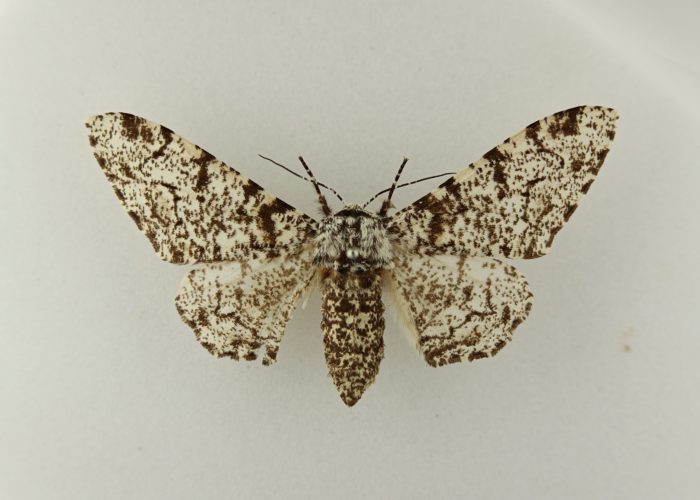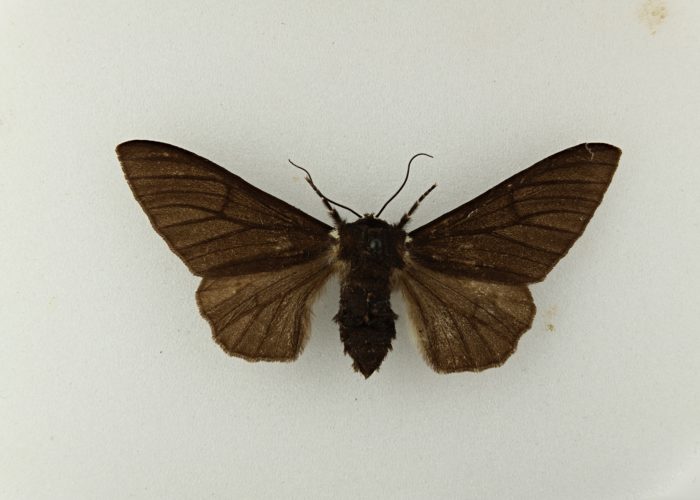The Peppered Moth
Theme: The impact of industry, Medicine, science and the people, Economic and technological revolution
The story of the Peppered Moth is one of the clearest illustrations, both of the effects of the Industrial revolution, and of Charles Darwin and Alfred Wallace’s famous theory of evolution by natural selection.
During the 1700s, the Peppered Moth was (and still is) widespread across the UK. Its name comes from the typical patterning of dark speckles across its white wings. This patterning meant the moth was very well camouflaged against the lichen-covered tree trunks of the mainly rural landscape of the time. This protected it from being spotted and eaten by predators. A naturally occurring genetic mutation means that some peppered moths have dark wings. This variety (called ‘f. carbonaria’) was highly visible to predators and so was much less common than its lighter cousins.
But as the Industrial revolution began to really take off in the 1800s, pollution from the dense industrial smoke and soot killed off lichens and darkened tree trunks and walls in towns and cities. As a result, the paler moths became more visible to predators, while the darker variety became more camouflaged. More and more of the darker variety survived and produced offspring, while the lighter variety was picked off by predators in ever increasing numbers and so unable to pass its ‘pale’ genes to subsequent generations.
Since the life cycle of the Peppered Moth is relatively short, the common, pale variety was replaced in urban areas by the darker variety. The first dark Peppered Moth was recorded in Manchester in 1848 and, by 1895, this variety accounted for 98% of these Moths in the city.
Around this time, Charles Darwin and Alfred Wallace were both independently developing and refining their theory of evolution by natural selection. Through careful observations of the natural world, made over many years, they both realised that animals and plants that are particularly well suited to their environment are the most likely to survive and pass these characteristics on to the next generation. Darwin called this ‘survival of the fittest’ (or best adapted). Gradually, over many generations, these characteristics – such as long necks, warm fur, colour etc – become more common in a population, and a species changes over time.
The Peppered Moth is an excellent example of evolution by natural selection.
Did you know..?
Since the Clean Air Act of 1956, the light-coloured Peppered Moth population has once again increased in urban areas of the UK.
Use our Classroom resources to investigate this object, and the Industrial Revolution and Science, Medicine and the people themes further.
Highlights:
- Using objects, artworks and other sources to find out about the past
- Introducing the Age of Revolution
- How to explore adaptation and evolution using Scratch
And much more…
Sources & acknowledgements
This object description and its related educational resources were researched and written by our team of historians and education specialists. For further information see the item’s home museum, gallery or archive, listed above.
-
Did you know..?
Since the Clean Air Act of 1956, the light-coloured Peppered Moth population has once again increased in urban areas of the UK.
-
Education overview
You can access a range of teachers resources related to this object and more on our education page.
Please also see our glossary of terms for more detailed explanations of the terms used.
-
Curatorial info
- Originating Museum: Manchester Museum
- Original record
-
Use this image
You can download this image for personal and educational use but please take note of the license type and rights holder information.
- Rights Holder: Manchester Museum
- License Type: Creative Commons





